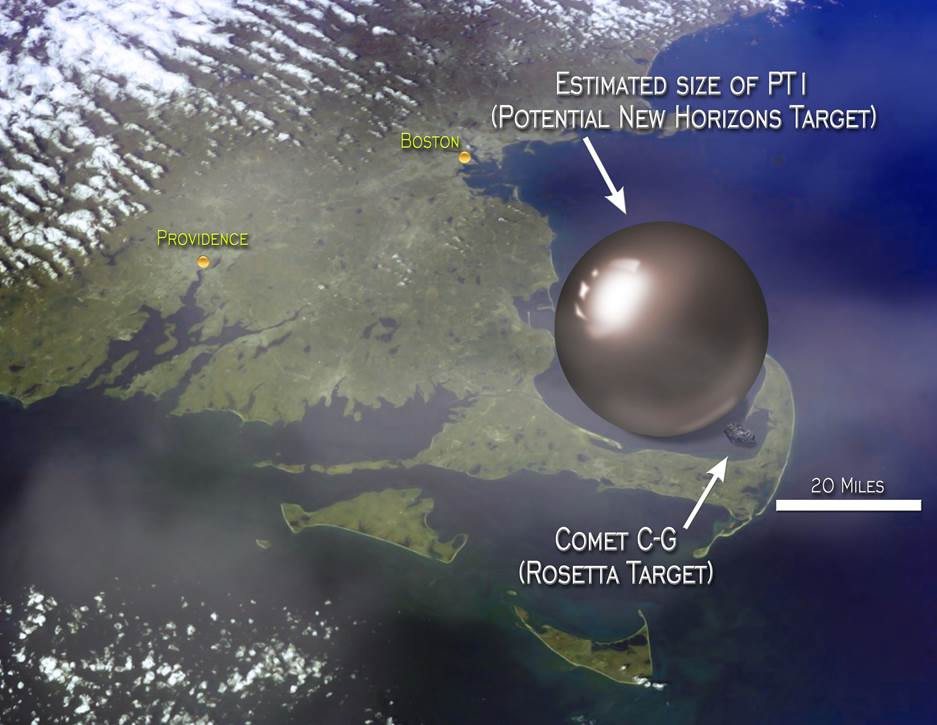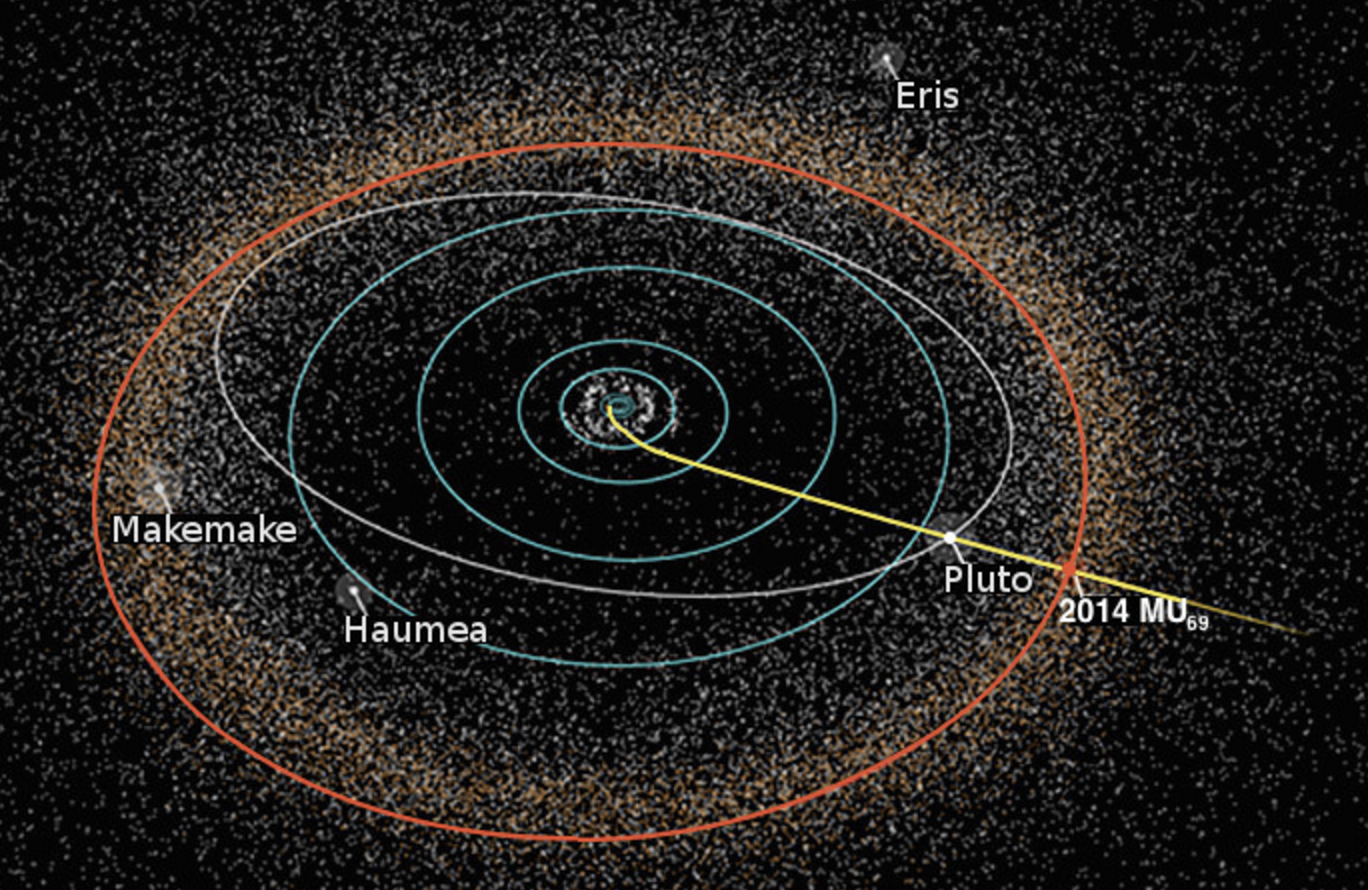NASA’s New Horizons space probe is currently speeding towards a mysterious Kuiper Belt Object known as MU69. Recent observations of the distant object indicate a very reddish surface — possibly even redder than the splotches found on Pluto.
Artist’s impression of New Horizons encountering a Kuiper Belt object. Its next target, 2014 MU69 is much larger, measuring about 20-30 miles (30-45 km) in diameter. The probe is expected to make it’s rendezvous on January 1, 2019. (Image: NASA/JHUAPL/SwRI)

Size comparison of MU69. (Image: New Horizons/NASA)
This small Kuiper Belt object (KBO), which measures about 20-30 miles (30-45 km) in diameter, is located 1.6 billion miles (2.6 billion km) beyond Pluto. By the time New Horizons gets there on January 1, 2019, it will be about 43.3 times as far from the sun as the Earth. Incredibly, New Horizons will fly past closer to MU69 than Pluto when it made its historic Pluto flyby on January 15, 2015.
Speaking today at the the American Astronomical Society Division for Planetary Sciences (DPS), mission scientists talked about the Pluto flyby, but they also looked ahead to the Kuiper Belt encounter. Recent observations made by the Hubble Space Telescope suggests MU69 is red — if not redder — than Pluto. MU69 is now the smallest KBO to have its colour measured, and it’s our first sense of what this mysterious object actually looks like.

New Horizons trajectory and the orbits of Pluto and 2014 MU69. (Image: NASA/Johns Hopkins)
The reddish colour of MU69, like the its moon Charon, suggest the presence of tholin, a class of molecules that’s formed through the ultraviolet irradiation of simple organic compounds such as methane and ethane. Tholin doesn’t form naturally on Earth, but it’s abundant on the surface of icy bodies in the outer solar system. Using Hubble, scientists have confirmed that MU69 is part of the “cold classical” region of the Kuiper belt, which contains some of the oldest objects in the Solar System.
The further away New Horizons gets, and as it encounters objects impossibly far from Earth, the more Star Trek-like this mission becomes. Expect full weirdness when this incredible space probe makes its close encounter on New Year’s Day 2019.
[NASA]
